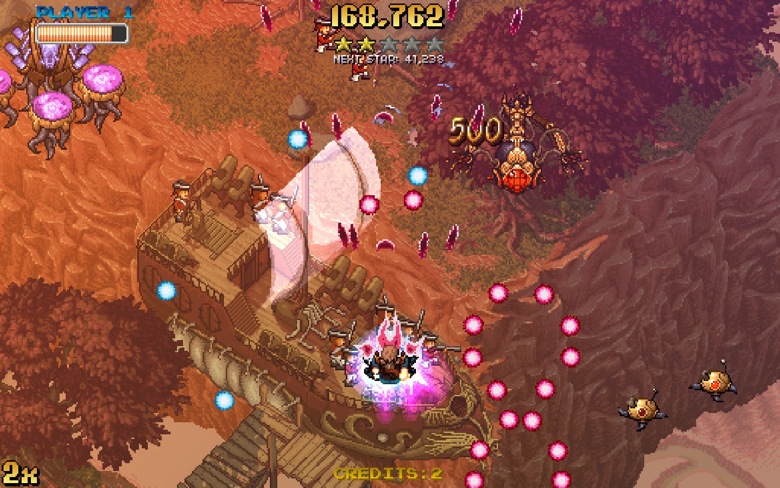
While I’m not typically a shmup player, lately I’ve been enjoying a great indie shooter called Jamestown. It piqued my interest with its colonial Martian setting and beautiful pixel art. However, the game’s lasting appeal rests in the strength of its peculiar Vaunt mechanic.
When activated, Vaunt grants the player a seemingly arbitrary list of benefits: a brief bullet shield, followed by increased damage and a score multiplier for as long as the energy meter is kept filled. In practice, this mechanic gives Jamestown its own particular systematic rhythm of tension and respite. I’d like to use Vaunt to explore the idea that a game mechanic can have an inherent dramatic arc similar to those created by traditionally authored stories.
When I speak of a dramatic arc, I mean something along the lines of the three-act structure commonly used in storytelling. Strongly authored media (films, books, plays, etc.) map very nicely to this kind of structure, as does the authored content in video games. For instance, a level in Jamestown is composed of a series of increasingly intense enemy waves followed by a climactic boss fight. The pacing and intensity of this level design is determined entirely by the game’s creators.

When examining a game’s effective dramatic arc, we must of also take into account the player’s agency. The abilities that the player has control over can increase or decrease dramatic tension. For instance, a bomb move that kills all the enemies on screen gives the player a breather, thus creating a moment of dramatic respite. A slow powerful attack creates high tension (as the move charges) followed by low tension (as the hit connects.) These types of mechanics create a parallel dramatic arc authored by the player. The two arcs superimpose each other, interacting in a sort of wave interference that heightens some moments and dampens others.
What would the dramatic arc for the Vaunt mechanic look like? It begins with normal moment-to-moment gameplay, with its mild variations in intensity. Some high-tension impetus for activating Vaunt would then occur: a mid-wave difficulty spike or simply the filling of the energy meter. In response to this event, the player hits the ‘B’ button to activate the bullet shield and begin Vaunt mode. The momentary safety of this shield creates a brief nadir in dramatic tension.
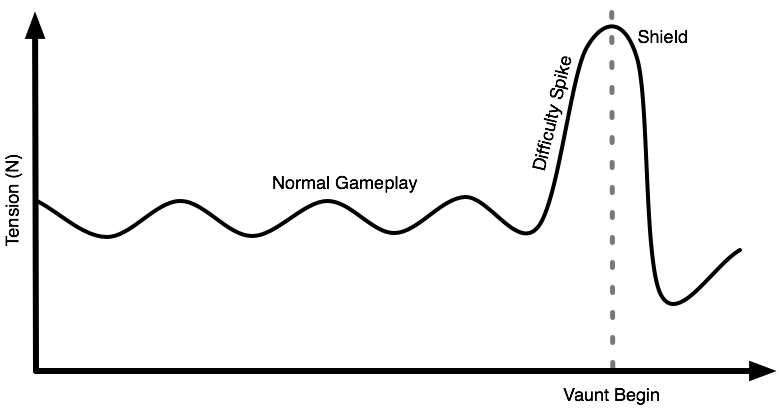
After the shield has expired, Vaunt mode remains active as long as the player continues to replenish the energy meter by killing enemies. As I mentioned previously, remaining in this mode grants a score and damage multiplier. These multipliers increase the benefit of skilful play, which in turn increases the innate tension of moment-to-moment gameplay. Furthermore, surviving the duration of Vaunt mode grants an additional score bonus. The dramatic tension increases parabolically as the potential benefit of the survival bonus accumulates over time.
Vaunt mode can terminate in three different ways. The most desirable outcome, illustrated in the graph below, is when the player runs out of enemies to kill and the energy meter expires gracefully, granting the full survival bonus. In terms of dramatic tension, this would be a plateau followed by a resumption of normal gameplay. If the player instead becomes overwhelmed during Vaunt mode, she has the option to press ‘B’ again to activate a second bullet shield. This choice ends the mode prematurely, only granting half the survival bonus. This outcome would be represented graphically by a second brief peak in tension. Finally, the player could die during Vaunt mode and lose out on their survival bonus entirely.
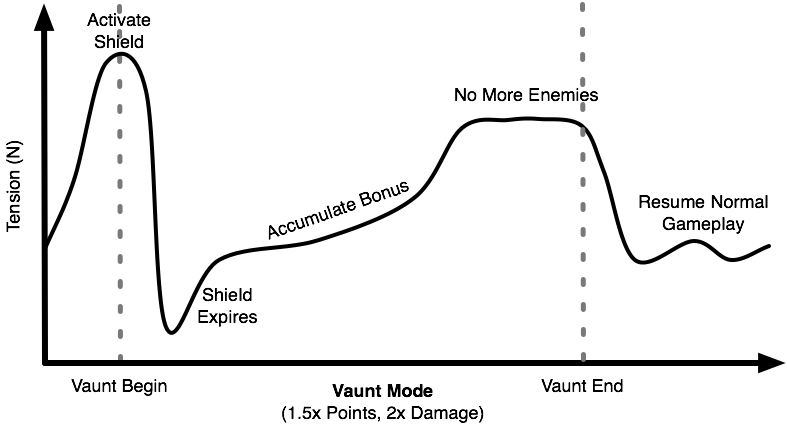
These graphs reveal some general ways that a game mechanic can increase or decrease dramatic tension. When they provide momentary safety, increase performance pressure or ransom potential reward, they have a strong dramatic effect over time. We can also see how the mechanical tension interacts with the authored dramatic arc. The encounter design provides the high-tension impetus for activating Vaunt, and the level’s difficulty strongly influences which way the mode will end. The nature of Jamestown’s Vaunt mechanic works in concert with its strong level design to create an exciting gameplay experience.
The MDA framework asserts that game mechanics create an aesthetic response in the player. When we observe this response over time, we see patterns of dramatic tension and reprieve that match those found in storytelling. We often praise the narrative power of heavily-authored games, but the best video game tales often emerge from system-centric games like Dwarf Fortress, Civilization and EVE Online. If we acknowledge that game mechanics have inherent dramatic arcs that superimpose the authored content, then we can begin to analyze mechanics in terms of their storytelling potential.


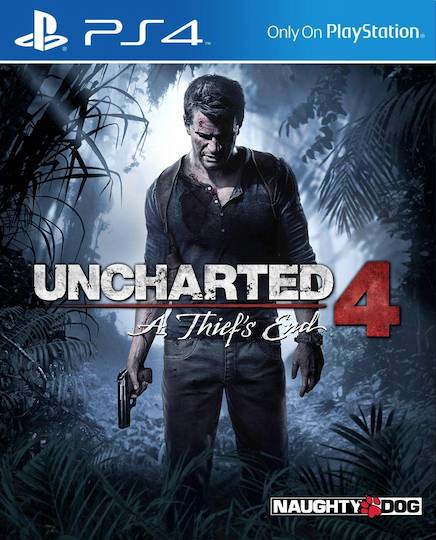
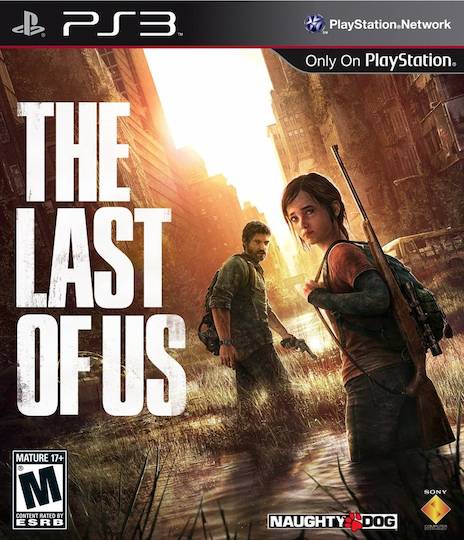
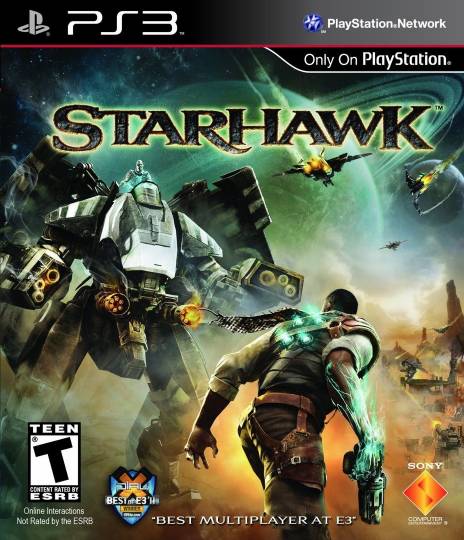
August 1st, 2011 at 9:48 am
Excellent summary. What I love about the Vaunt mechanic is that it seems like the developers engineered the “cool down” period (where no enemies appear) before a boss battle specifically to run down your vaunt meter. It amps up the tension tremendously… I know *something* terrible is coming up, but I’m completely helpless, stuck watching that meter drain. It always seems to run out just a moment before I’m capable of engaging the boss.
August 2nd, 2011 at 7:01 pm
Vaunt actually has two separate tension curves. The first one, as you mentioned, occurs when the player activates the shield due to becoming overwhelmed.
The second curve is very different, and comes from the player not starting out overwhelmed and eager to use a shield, but a player looking for a higher score. This player will use a vaunt at the beginning of a wave, and so will not have the tension increase. As they get to the middle of the wave, tension gets to the highest point, because they did not save their vaunt for when the most bullets are on screen. As a consequence, the wave is much more difficult. On top of that they must weigh the risk/reward of using their second shield and ending the vaunt in the middle of the wave.